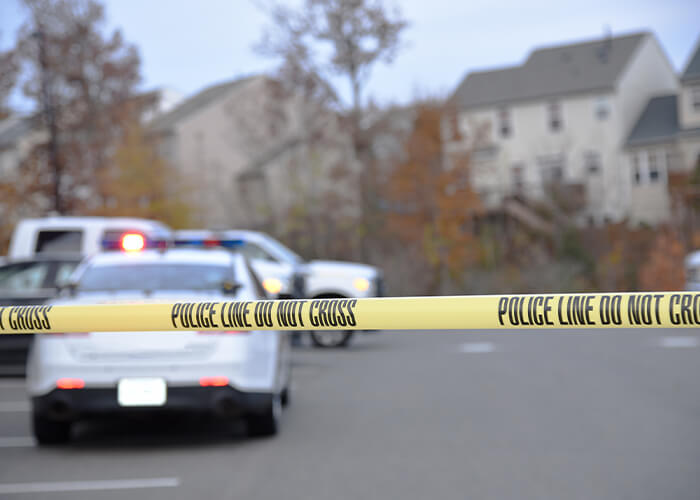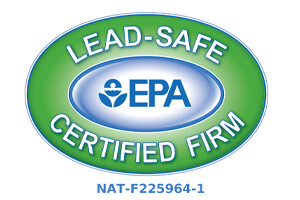
Who Cleans Up After A Violent Crime
Unfortunately, after a murder or other serious violent crime, the police and investigators do not have a special unit that comes in to clean up the scene. While some departments may work closely with crime scene cleaning services and may be able to offer referrals, the responsibility of cleaning the crime scene falls to the property owner.
Many crimes that later require cleaning happen in the home, which leaves the task of cleaning all too often to the victim’s next of kin. However, if the crime happens in a rental home, place of business, or the like, responsibility falls to the property owner. Likewise, if the crime has taken place on public property, the state or local entity who maintains the property is responsible.
The Right Tools To Clean Up A Crime Scene
It is not generally suggested that the task of cleaning up the scene of a violent crime be attempted by an amateur. Bodily fluid is considered a hazardous material, and thus requires special equipment, methods, and disposal in order to protect both the person doing the cleaning and the general public.
Equipment that is usually used by professionals to clean up a crime scene includes:
- PPE – Personal protective equipment, or PPE, used by crime scene cleaners include disposable, non-porous gloves, chemical spill boots, filtered respirators, and a protective suit. Most of this equipment is deemed one-time-use and is immediately discarded after the job in special hazardous waste containers.
- Biohazard Disposal Containers – There are both solid plastic containers and heavy-duty hazmat bags that can be sealed safely to contain health hazards.
- Cleaning Supplies – Traditional mops, buckets, sponges, cleaning cloths, etc. Cleaning supplies must also be disposed of after use.
- Disinfectant Solutions – Such as bleach and peroxide.
- Industrial Strength Deodorizers – Come in many different types and may be used in a fogger machine. Ozone machines are often used to assist in deodorization of the area.
- Solvents – Enzyme solvents help to disinfect and re-liquefy dried blood.
- Shovels – To shovel coagulated bodily fluids into bags.
- Putty Knives – Putty knives are often necessary to remove organic matter from hard surfaces.
- Razor Blades or Box Cutters – Saturated carpeting or upholstery must be cut away and removed, it cannot be effectively cleaned.
- Ladders & Long Reach Cleaning Brushes – To reach high walls and ceilings.
Professional crime scene cleaners also often use a camera for before-and-after shots for insurance purposes. And though it isn’t necessarily on-the-job equipment, professional cleaners are normally required to maintain up-to-date vaccination against harmful infections like hepatitis-B.
Step-By-Step Crime Scene Cleaning Guide
If you wish to face the psychological and general health risks associated with crime-scene cleanup, you should first speak to the insurance agency that covers the property to find out if there are any special considerations they wish you to take.
Furthermore, you should also speak to your doctor to receive any necessary vaccines and advice on further methods of protecting yourself. And, of course, you should check with your local police department to ensure that their investigations are complete and you are free to clean the site.
- Protect Yourself – You will need several pairs of heavy cleaning gloves, shoe coverings, masks, and a pair of goggles. If you cannot get full respiration equipment, a good dust mask is better than nothing at all.
- Dispose Of Everything Necessary – Some items, such as metal and other non-porous materials can be disinfected, but wood or upholstered furniture, carpeting, and effective electronics will likely need to be broken or cut down and thrown away.
- Disinfect Everything Else – Remove any other objects from the scene AFTER they have been properly cleaned and disinfected to avoid spreading possible infectious diseases.
- Check The Scene Carefully – Look carefully to identify all areas affected by bodily fluid or organic matter.
- Work From The Top Down – Start with the ceiling (if necessary), then work your way down the walls to the floor. This way there is less chance of re-contaminating already cleaned areas.
- Scrape Dried Material – Use putty knives or shovels to scrape the majority of material to be removed (if necessary). Dispose of items afterward.
- Scrub – Use traditional cleaning instruments (mops, brushes, rags, scratch-pads, etc.) and heavy-duty or industrial strength cleaning chemicals to clean the affected areas. Be thorough, the area should appear to be clean before you move on from this step. Dispose of cleaning instruments in approved biohazard containers.
- Disinfect – Use bleach and hydrogen peroxide to re-clean areas and kill any bacteria and viruses that may still be present. Use fresh cleaning instruments, and remember to read all of your cleaning chemical labels to insure there will be no dangerous interactions.
- Deodorize – Ventilate the area and apply industrial strength deodorizers as necessary.
- Dispose – Take all of your waste bags and containers to the proper biohazard disposal site in your area.
After the area is properly cleaned, you can move items back in and make any structural repairs necessary.
Call In The Professionals
I will say again that it is not recommended to clean up a violent crime scene on your own. There are many professional services that can get the job done quickly, inexpensively, and most importantly, safely.
In Arizona, contact BioteamAZ, Phoenix’s leader in crime scene and hazardous waste cleanup. Don’t risk your health and safety going at it alone. Contact BioteamAZ today.






